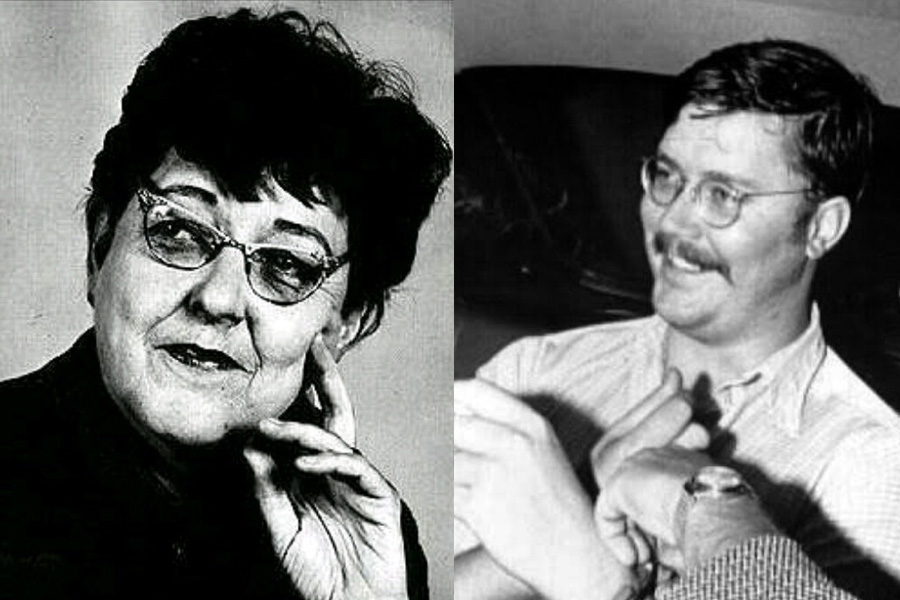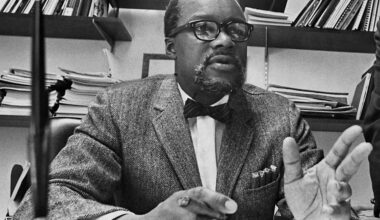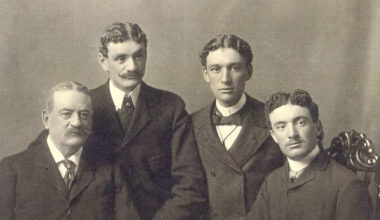Basic Information
| Field | Details |
|---|---|
| Full name | Clarnell Elizabeth Stage |
| Also known as | Clarnell Strandberg (after third marriage) |
| Birth | March 17, 1921 |
| Birthplace | Winnett, Petroleum County, Montana, USA |
| Death | April 21, 1973 |
| Place of death | Aptos, Santa Cruz County, California, USA |
| Parents | Clarence Stage (father), Nellie Neudigate Stage (mother) |
| Siblings | Rex Stage (older brother) |
| Children | Susan (b. c. 1943), Edmund Emil Kemper III (b. 1948), Allyn (b. 1951) |
| Marriages | Edmund Emil Kemper Jr. (m. 1942–1961); Norman Vincent Turnquist (m. 1962–1963); Harold Magnus Strandberg (m. 1964–c. late 1960s) |
| Occupations | Secretary; Administrative Assistant (University of California, Santa Cruz, c. 1969–1973) |
| Residences | Montana (Winnett, Great Falls, Helena), California (Aptos) |
| Notable for | Mother of Edmund Kemper; subject of intense scrutiny due to familial dysfunction and her 1973 murder |
Early Life in Montana
Clarnell Elizabeth Stage was born on March 17, 1921, in the modest ranching town of Winnett, Montana. She grew up during the lean years of the Great Depression, the youngest of two children in a working-class home. Census snapshots place her family in rural precincts where the seasons ruled daily life and expectations were pragmatic: work hard, keep steady, endure.
By her mid-teens, she attended Great Falls High School, roughly 150 miles from Winnett. Class listings from the late 1930s show her active in school life and oriented toward clerical work. Secretarial skills were a ladder out of rural limits for many young women of her era, and Clarnell followed that rung. There is no evidence of college, but by 1940 she appears in records as a young adult poised to enter the workforce, a pen and shorthand book at the ready.
Marriages, Moves, and a Family in Motion
At 21, in 1942, Clarnell married Edmund Emil Kemper Jr. The war years and aftermath were turbulent for many couples, and this union was no exception. Over nearly two decades, they had three children—Susan, Edmund (Ed), and Allyn—before divorcing in 1961. Divorce filings of the era referenced mental or extreme cruelty, language then commonly used in contested separations.
Within a year, Clarnell married again—this time to Norman Vincent Turnquist (1962–1963). The second marriage collapsed quickly. A third followed: Harold Magnus Strandberg (1964–late 1960s). After that divorce, she continued using the surname Strandberg in public and private settings. The pattern was unmistakable: short marriages, sharp breaks, and a mother working to stabilize a household amid constant strain.
Motherhood and a Household Under Strain
The family dynamic—particularly between Clarnell and her son, Ed—has since been dissected by journalists, clinicians, and an army of true-crime commentators. Much of what is known about their home life stems from Ed’s later statements and interviews, which describe a climate of scorn, fear, and unpredictable discipline. He alleged that in 1957–1958 he was confined to the basement at night, that affection was withheld, and that harsh, demeaning criticism was frequent. Others who knew the family recalled volatility and distance.
Not all details can be independently verified after the fact, and interpretations vary. Still, even the most cautious reading indicates a home knotted by conflict and control, where the temperature of the room could change without warning. The daughters—Susan and Allyn—largely stepped away from public view, their lives folded back into privacy.
Children at a Glance
| Name | Birth year | Notes |
|---|---|---|
| Susan | c. 1943 | Eldest child; pursued life away from public scrutiny. |
| Edmund Emil Kemper III | 1948 | Middle child; later convicted of multiple murders, including his mother’s. |
| Allyn | 1951 | Youngest child; maintained a private life. |
Career: From High School Skills to the University Office
Clarnell’s professional life followed straightforward lines. She leveraged high school training into clerical jobs, the kind that require stamina and precision in equal measure. After moving to California, she took a position around 1969 as an administrative assistant at the University of California, Santa Cruz. By all accounts it was ordinary office work—scheduling, filing, correspondence—the daily cogs that keep an institution turning.
Her employment offered stability after years of personal upheaval and supported a modest life in Aptos. Salaries for such roles at the time were far from lavish, but they kept the rent paid and the lights on.
Career Milestones
| Year | Milestone |
|---|---|
| 1938–1939 | Graduated high school; prepared for clerical work. |
| 1940s–1960s | Various clerical/secretarial posts while raising three children. |
| c. 1969–1973 | Administrative assistant at the University of California, Santa Cruz. |
Death and Aftermath
On April 21, 1973, Edmund Kemper, Clarnell’s son, killed her in Aptos, California. He later confessed to police. The case was a dark event in American criminal history, producing press coverage, courtroom analysis, and decades of books, films, and dramatisations. In subsequent narratives, Clarnell’s life was often reduced to a spark or symbol. Behind the headlines was a Montana country girl who married, divorced, worked, and struggled—ordinary facts suddenly overwhelmed by an exceptional tragedy.
Myths, Labels, and What We Don’t Know
Over the years, labels have stuck to Clarnell—“domineering,” “man-hating,” “alcoholic”—many of them derived from Ed’s accounts and repeated by commentators. Claims that she had a specific clinical diagnosis, such as borderline personality disorder, remain unverified. The historical record is fragmentary: personnel files closed, private letters lost, friends and family silent or absent. The gaps invite speculation, but they also caution humility. Not every question finds an answer, and not every echo is the original sound.
Family Snapshot
| Person | Relation | Lifespan (if known) | Notes |
|---|---|---|---|
| Clarence Stage | Father | b. c. 1880s–d. before 1973 | Ranching/farming background; Montana roots. |
| Nellie Neudigate Stage | Mother | b. c. 1890s–d. unknown | Homemaker; kept the family through Depression-era austerity. |
| Rex Stage | Brother | b. c. 1919–d. unknown | Older sibling; little public record after youth. |
| Edmund Emil Kemper Jr. | Husband (1) | 1919–1985 | Married 1942–1961; three children together. |
| Norman Vincent Turnquist | Husband (2) | 1917–1965 | Married 1962–1963; short union. |
| Harold Magnus Strandberg | Husband (3) | 1921–1986 | Married 1964–late 1960s; surname retained post-divorce. |
| Susan | Daughter | b. c. 1943 | Eldest child; private life. |
| Edmund Emil Kemper III | Son | b. 1948 | Convicted murderer; confessed to killing his mother in 1973. |
| Allyn | Daughter | b. 1951 | Youngest child; private life. |
Key Dates and Places
- 1921-03-17: Born in Winnett, Montana.
- 1934–1939: Attended Great Falls High School.
- 1942-XX-XX: Married Edmund E. Kemper Jr.
- 1943–1951: Births of three children.
- 1961-XX-XX: Divorced first husband.
- 1962–1963: Second marriage and divorce.
- 1964–c. late 1960s: Third marriage and divorce; continued using Strandberg.
-
- 1969: Began administrative role at UC Santa Cruz.
- 1973-04-21: Killed in Aptos, California.
Context and Character
The outlines of Clarnell’s life are cut from common cloth—rural beginnings, early marriage, clerical work, single motherhood—yet her story is freighted with the gravity of what came after. Accounts portray a sharp-witted, controlling presence; others remember a woman doing what she knew in a time that offered women few easy exits. She could be flinty, unyielding, perhaps encouraged by survival in a hard place and a hard time. The home she presided over became a tinderbox, and history recorded the fire rather than the daily sparks.
FAQ
Who was Clarnell Stage?
She was an American secretary and administrative assistant, born in Montana in 1921, best known as the mother of Edmund Kemper.
Where was she born and where did she die?
She was born in Winnett, Montana, and died in Aptos, California, on April 21, 1973.
How many times did she marry?
She married three times—first in 1942, then in 1962, and again in 1964.
What was her occupation?
She worked primarily in clerical and administrative roles, including at the University of California, Santa Cruz, from around 1969 to 1973.
Did she have a diagnosed mental illness?
No formal diagnosis is documented; later claims about specific disorders remain unverified.
How many children did she have?
She had three children: Susan, Edmund (Ed), and Allyn.
What is she most known for today?
Her notoriety stems from her murder by her son, Edmund Kemper, and the subsequent focus on their volatile family dynamic.
Did she use social media?
No; she died in 1973, long before social media existed.
Is there a public gravesite?
She is reported to be buried in Montana; the precise details are not widely publicized.



